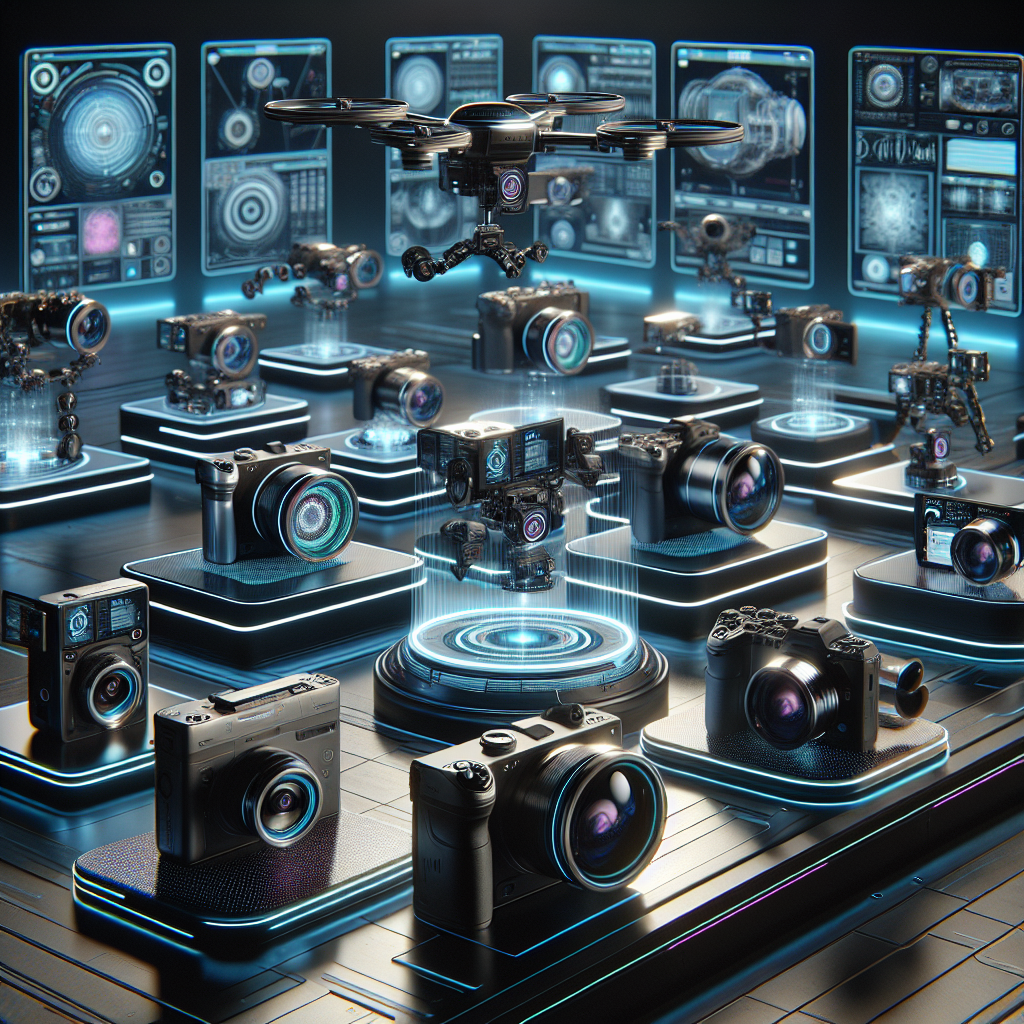Best AI-Powered Cameras in 2025: The Future of Photography?
Introduction
In 2025, the landscape of photography has been revolutionized by the advent of AI-powered cameras, marking a significant evolution in how images are captured, processed, and even conceptualized. These cutting-edge devices leverage sophisticated artificial intelligence algorithms to enhance image quality, automate complex shooting scenarios, and offer unprecedented customization, transforming both amateur and professional photography. AI-powered cameras now come equipped with features such as real-time scene analysis, automatic adjustment of settings for optimal exposure and focus, and advanced object recognition, making them incredibly powerful tools for creativity and expression in the digital age. This integration of AI technology not only simplifies the photographic process but also pushes the boundaries of what cameras can achieve, setting new standards for clarity, detail, and artistic flair.
Best AI-Powered Cameras in 2025: The Future of Photography?
In the rapidly evolving world of technology, artificial intelligence (AI) has become a cornerstone in enhancing various gadgets, with cameras being no exception. As we step into 2025, AI-powered cameras are not just a novelty but have become essential tools for both amateur and professional photographers, redefining the boundaries of what’s possible in photography.
The integration of AI in cameras has led to significant advancements in image processing and automation, making photography more accessible and yielding results that were once only possible for skilled professionals. One of the standout features in this year’s lineup of AI cameras is the ability to automatically adjust settings based on the shooting environment. This feature ensures optimal exposure, focus, and color balance, making every shot seem like it was taken by a seasoned photographer.
Moreover, facial recognition technology has been refined to a point where cameras can now identify and track subjects with unprecedented accuracy. This is particularly useful in dynamic environments where capturing spontaneous moments in perfect clarity can be challenging. The AI algorithms are designed to predict movement and adjust the focus accordingly, ensuring sharp images even in fast-paced scenarios.
Another exciting development in 2025 is the enhancement of low-light photography. AI-powered cameras now come equipped with sensors that are much more sensitive to light, coupled with algorithms that reduce noise without sacrificing detail. This makes it possible to capture stunning photographs in conditions that would previously have required additional lighting equipment.
Furthermore, the AI in these cameras also extends to post-processing capabilities. Advanced machine learning models can now analyze images and suggest edits or automatically enhance them based on a vast database of professionally edited photos. This not only speeds up the workflow for professionals but also allows hobbyists to produce images that resonate with professional quality.
In addition to technical enhancements, AI cameras are becoming more user-friendly. Voice-activated controls and gesture recognition are just a few of the intuitive features that make these cameras more accessible to people of all ages and skill levels. Whether it’s adjusting the zoom, changing settings, or even taking a photo, these tasks can now be performed without even touching the camera, making it easier than ever to capture the perfect shot.
The environmental impact of these technologies has also been a focus in recent developments. Manufacturers are increasingly mindful of the ecological footprint of their products. Many AI cameras in 2025 are built with sustainable materials and designed to be energy efficient, aligning with global efforts to combat climate change.
In conclusion, the AI-powered cameras of 2025 are not just improving the technical aspects of photography but are also making it more inclusive and environmentally conscious. These cameras represent a significant leap forward in the field of photography, offering tools that enhance creativity and expand the possibilities of what can be captured through a lens. As AI continues to evolve, we can only anticipate more groundbreaking advancements that will further transform the landscape of photography, making it an exciting time for anyone with a passion for capturing the world through a camera.
Conclusion
In 2025, the best AI-powered cameras have significantly transformed the landscape of photography by integrating advanced machine learning algorithms and neural network capabilities. These cameras offer unprecedented levels of automation and precision in image capturing, processing, and editing. Key features include real-time scene analysis, automatic adjustment of settings for optimal exposure and focus, and sophisticated post-processing tools that adapt to the photographer’s style. The integration of AI has also enhanced the capabilities of cameras in low-light conditions and complex dynamic environments, making professional-quality photography more accessible to amateurs. Additionally, AI-powered cameras have expanded into new markets, including drones and smartphones, providing a seamless, user-friendly experience that pushes the boundaries of traditional photography. Overall, the future of photography with AI-powered cameras promises a blend of enhanced creativity, efficiency, and accessibility, reshaping how we capture and interact with visual content.



